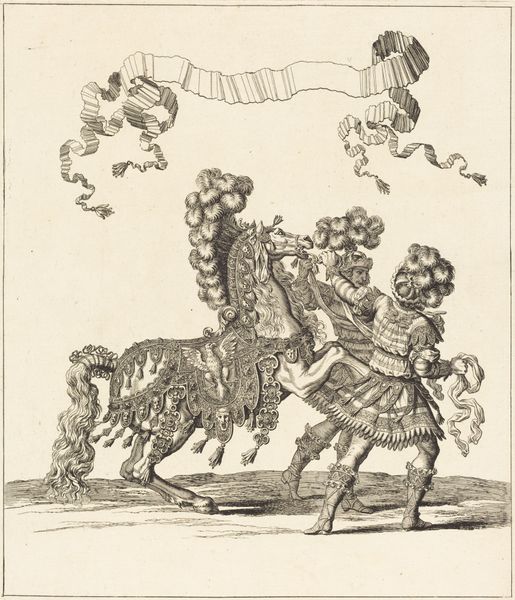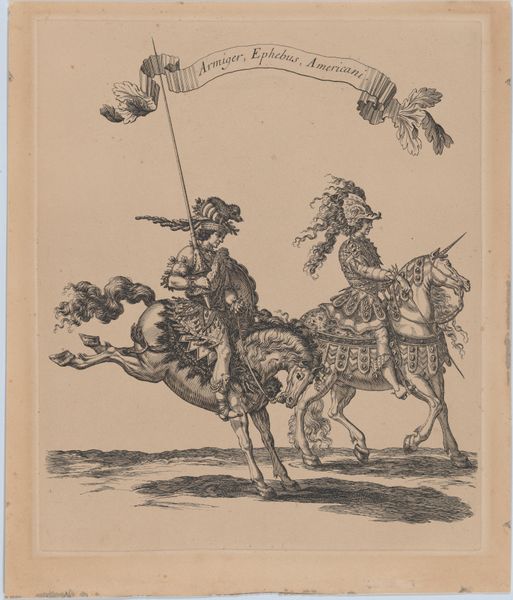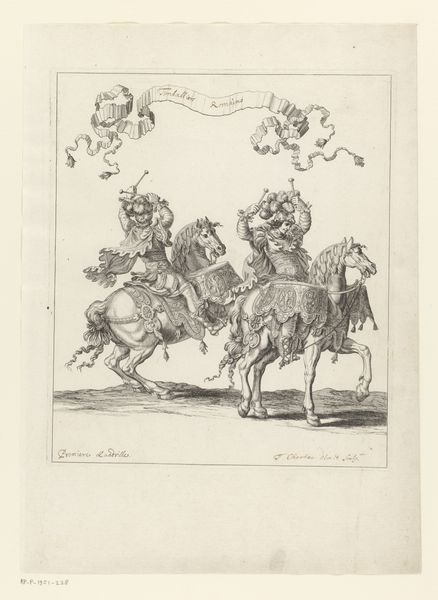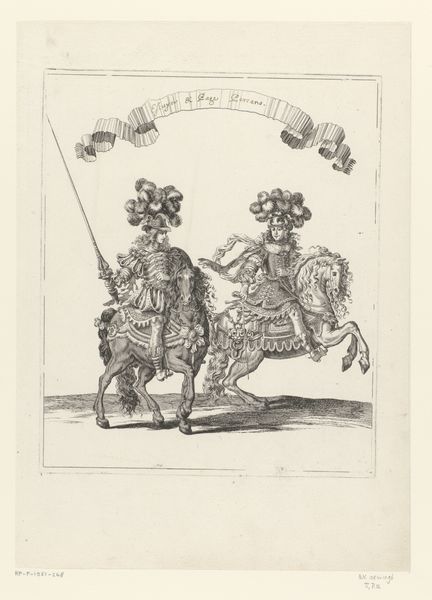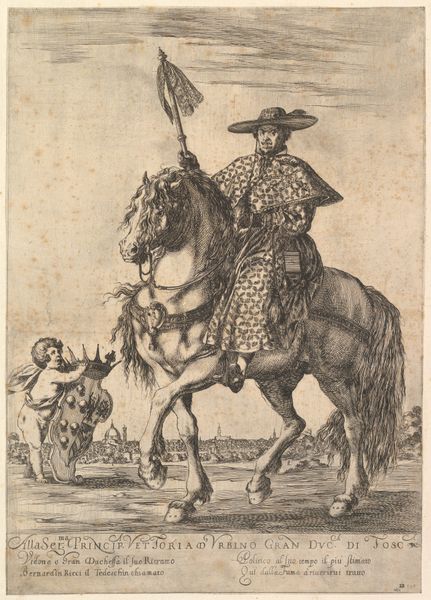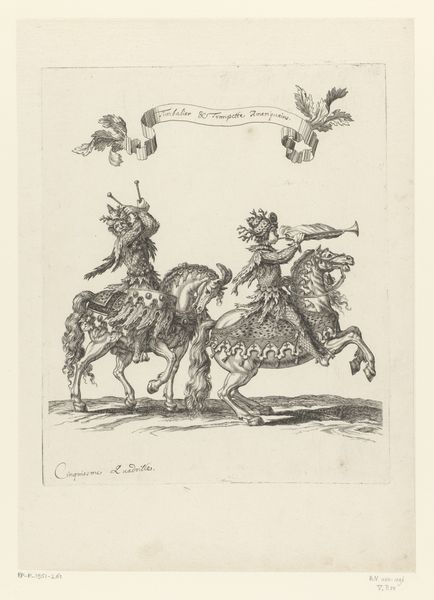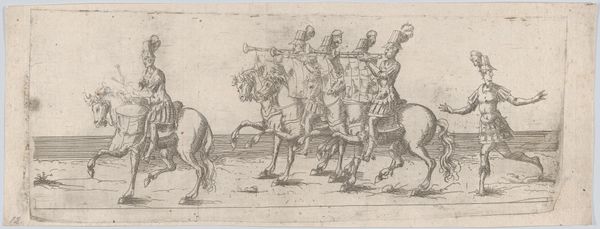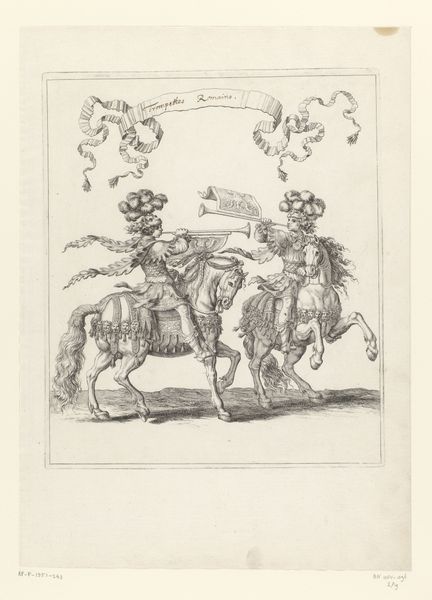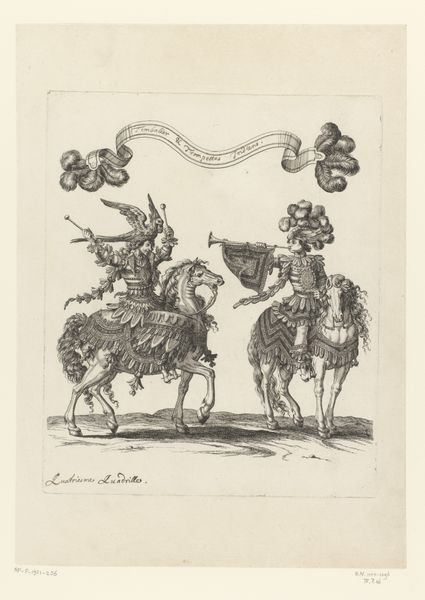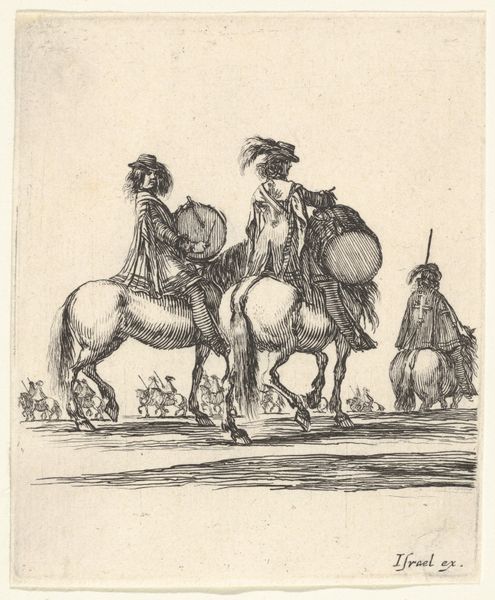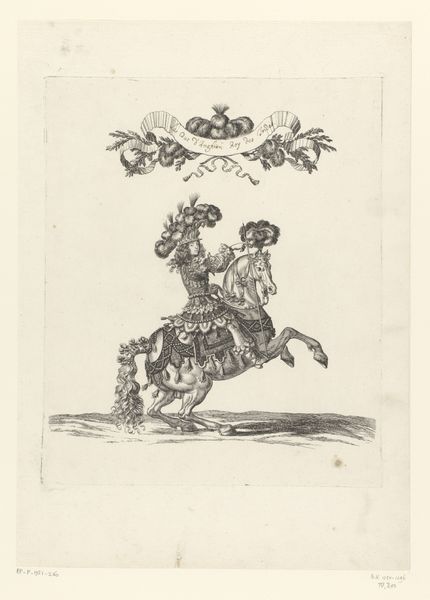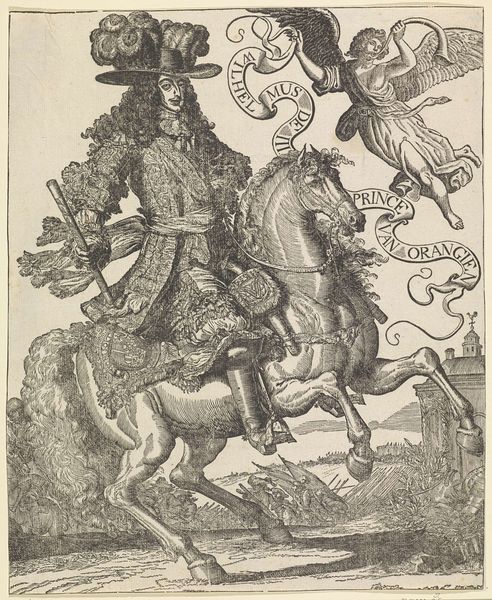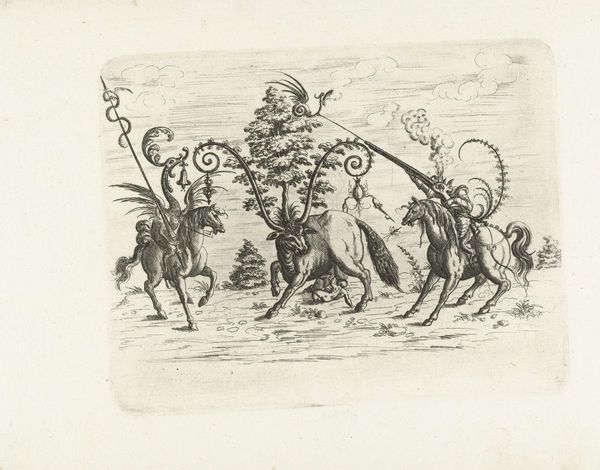
Plate 30 from "Course des Tetes et Bagues" 1657 - 1667
0:00
0:00
drawing, print, engraving
#
drawing
#
baroque
# print
#
figuration
#
horse
#
line
#
history-painting
#
engraving
Dimensions: Sheet: 11 7/16 × 10 1/16 in. (29.1 × 25.5 cm)
Copyright: Public Domain
Curator: This intricate engraving is Plate 30 from "Course des Têtes et Bagues," dating from around 1657-1667, created by François Chauveau. Look closely at the detailed linework, typical of Baroque printmaking, now residing at the Metropolitan Museum of Art. Editor: My goodness, what elaborate costumes! All that fine line work making each horse look like it is wearing armor made of lace. There is a strange tension here. This is an idealized portrayal of a royal pastime created with such painstaking manual labor! Curator: Indeed! Chauveau's process involved meticulously etching the image onto a metal plate, showcasing not just artistic skill, but the physical labor of translating grand spectacle into reproducible form. The visual language certainly echoes those performances for aristocratic audiences, but it does feel far from it as we consider the process. Editor: Thinking about the lines themselves—etched with such pressure to exist as multiples of the event for a new potential viewing demographic. The line isn’t neutral. Is it performance too? To show a status beyond reach? That would also imply its production—this artwork isn't simply material documentation, it is actively a social one! Curator: You raise an interesting point. Consider also the equestrian imagery. It's deeply rooted in displays of power and prestige. Think of the social and political implications – the "Course des Têtes et Bagues" was an exclusive affair. Chauveau’s engraving disseminated its image, albeit still within certain circles, and solidified its status. It becomes about accessibility in image, if not in experience. Editor: I suppose the horse would certainly need to be considered for labor conditions as well, which can complicate notions of ‘refined sensibilities’ often aligned with works such as this. The horse's energy translated to ink from another perspective entirely. Curator: Precisely. This piece isn't merely a historical record but also evidence of both the artisan's labor and those it aimed to depict: labor transformed through ink to the upper echelons of power and privilege. Editor: Well, I now feel compelled to consider it both a commemoration of aristocracy as well as of Chauveau, a dedicated and meticulous printmaker. A complex combination of performance and materiality.
Comments
No comments
Be the first to comment and join the conversation on the ultimate creative platform.
